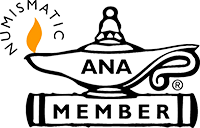Maximizing the Value of Your 1965 Quarter Collection
By Bullion Standard ·
6 min read

American Gold Buffalo with Silver Bars in the background, showcasing the diversity of precious metal investments.
Unveiling the Numismatic Significance of the 1965 Quarter
The 1965 quarter is a notable coin in the annals of numismatics, capturing the interest of both collectors and investors for its unique historical context. Released during a pivotal shift in U.S. coinage, the 1965 quarter marked the transition from silver to a copper-nickel composition, a change necessitated by economic pressures of the era. While earlier silver quarters are valued largely for their metal content, the 1965 quarter’s allure lies in its numismatic significance and potential for rare mint errors. This article delves into the reasons why owning 1965 quarters might represent a valuable investment opportunity.
The Mystery Behind the Value of a 1965 Quarter
Several factors play a crucial role in determining the value of a 1965 quarter in today’s market. The rarity of specific mint errors, the overall condition of the coin, and historical shifts in its metal composition all contribute to its desirability among collectors.
When discussing rarity, it’s important to consider both intentional and unintentional variations in the minting process. Unlike quarters produced just a year prior, the 1965 quarter lacks the intrinsic value derived from its silver content. This shift significantly altered how these coins were viewed, transforming them into historical artifacts rather than mere commodities of metal value.
The introduction of the copper-nickel alloy—prompted by a nationwide silver shortage and fluctuating metal prices—positions the 1965 quarter as a testament to its era’s economic and minting challenges. Understanding these factors is key to assessing the current and future value of these coins.
Unlocking the Key Traits of Valuable 1965 Quarters
- Condition and Grading:
The value of any collectible coin, including the 1965 quarter, hinges significantly on its condition. Mint state coins, those that show no signs of wear from circulation, are particularly sought after. Third-party grading services can provide a professional assessment that often boosts a coin’s market value, providing buyers with a reliable measure of authenticity and condition.
- Mint Errors and Variations:
Mint errors, such as double die strikes or planchet flaws, can elevate the value of a 1965 quarter, making them highly desirable among collectors. These errors can range from minor discrepancies to significant variations that radically alter the coin's appearance, potentially increasing its rarity and value.
- Rarity:
While the 1965 quarter saw substantial minting numbers, specific mint variations can be rare. Coins with unique attributes due to minting errors or those struck at specific mints (although 1965 quarters lack mint marks due to their transitional status) can drive collector interest and investment potential.

Spotting a Rare Gem: Identifying Valuable 1965 Quarters
- Examine the Physical Condition:
Carefully inspect the coin for signs of wear. Coins in mint or uncirculated condition are generally more valuable.
- Check for Mint Marks:
Though 1965 quarters do not feature mint marks, coins exhibiting unusual markings or electrotypes may stand out for collectors.
- Inspect for Error Coins:
Pay close attention to potential errors, such as double dies or planchet errors, which can greatly increase a quarter’s appeal and value.
- Reference Price Charts:
Utilize current price guides and online databases to contextualize the quarter’s market value, which can fluctuate with collector interest and economic trends.
Weighing the Investment: Pros and Cons of 1965 Quarters
Pros:
- Potential for High Returns:
Rare mint errors or particularly well-preserved coins can fetch a high premium in the market.
- Numismatic Appeal:
The robust community of collectors ensures ongoing interest in these quarters, preserving and potentially increasing their value over time.
- Historical Significance:
The coin represents a critical shift in U.S. monetary policy, appealing to history enthusiasts and adding non-monetary value.
Cons:
- Need for Expertise:
Accurate valuation often requires knowledge or professional grading, posing a challenge for novices.
- Market Volatility:
The market for collectibles can be capricious, with values swinging in response to collector trends and broader economic conditions.
- Limited Liquidity:
Coins are less liquid than other investments, such as stocks or bullion, and may require more time to sell at desired prices.
Navigating the 1965 Quarter Market: Investment Insights and Opportunities
Understanding the factors that impact the value of a 1965 quarter is essential for investors and collectors alike. The coin’s unique positioning as a transitional piece in American numismatics makes it a potentially lucrative investment for those willing to engage in due diligence. From professional grading to thorough market research, taking informed steps can enhance the likelihood of maximizing returns. Whether you are an experienced numismatist or a curious newcomer, engaging with experts and leveraging detailed resources can offer deeper insights into the ever-evolving market for 1965 quarters.
Frequently Asked Questions (FAQs)
1. What are the historical factors that influence the value of a 1965 quarter today?
The shift from silver to copper-nickel in 1965, driven by economic conditions of the time, plays a significant role in shaping the quarter's value in today's market.
2. How does the 1965 quarter compare to other coins in terms of investment potential?
While lacking in precious metal content, specific variations and mint conditions of the 1965 quarter can offer substantial returns for informed investors.
3. Are there particular mint marks or production quirks that enhance the desirability of the 1965 quarter for collectors?
Yes, the presence of certain mint errors—despite the absence of mint marks—can significantly increase the coin's desirability.
4. What role do precious metals play in determining the long-term investment value of a 1965 quarter?
Being composed of copper-nickel, its numismatic characteristics rather than precious metals content dictate long-term investment value.
5. How can collectors safely store and preserve their 1965 quarter collection to maintain or increase its value over time?
Ensuring optimal storage conditions—such as using acid-free holders and maintaining controlled environmental settings—can help preserve the coins' value. Regular inspections to detect any signs of wear or damage are also recommended.
Exploring Further Value in Your Collection
If you're excited about exploring the rich history and potential value of your 1965 quarter collection, take the next step in your numismatic journey with Bullion Standard. Our platform offers a wealth of resources to deepen your understanding of coin investments.
Whether you're aiming to expand your collection or simply curious about the market trends, visit our interactive charts for insights into precious metal trends. Discover how understanding market dynamics can further support your passion for coin collecting.





















